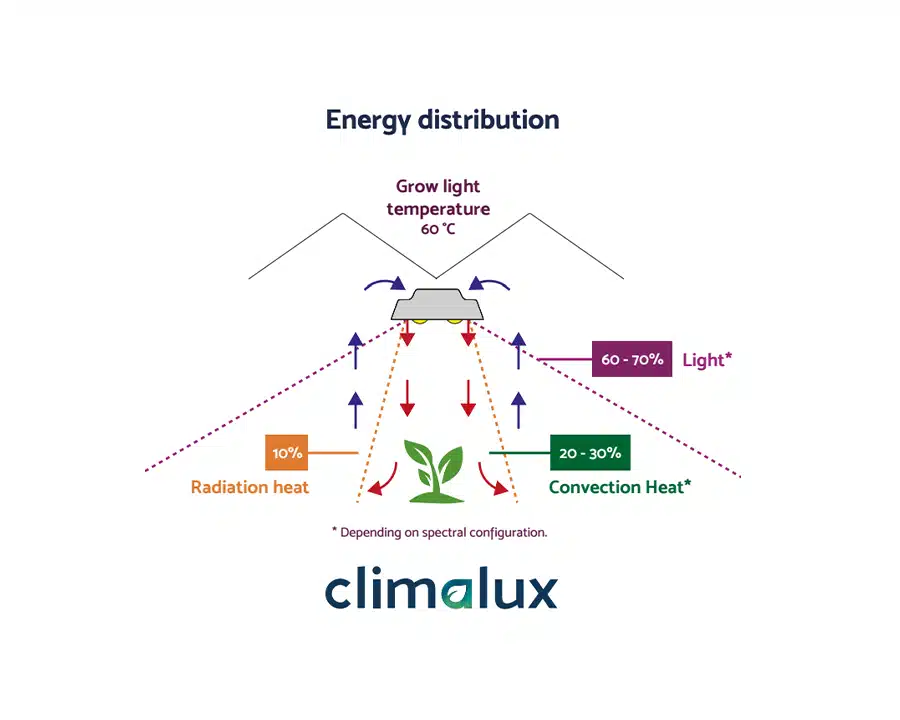One way to control moisture in the greenhouse is a set of dehumidifiers or condensers combined with a heat pump. This can be an excellent solution, but for proper operation and results, it must often be combined with screens and/or ventilation through the skylights. In addition, this measure is cost prohibitive, depending on the exact implementation of a dehumidification system it requires an investment of €8 -€14,–/m2, not to mention maintenance and energy consumption. In short, this method of controlling greenhouse humidity is not free.
So what is free? An alternative and cheaper way to achieve controllable humidity in the greenhouse is to use a lighting system with fan such as Climalux markets, see datasheet. The fan in the lamp not only cools the lamp, but then also blows the warmed air to the tops of the crop just where it is needed. This achieves almost 100% energy efficiency. Tests carried out by third parties (e.g. WUR1, Hortitech2) have shown that by applying the lighting in combination with aeration by the built-in fan, an improved microclimate is created between the crop whereby not only the relative humidity is reduced, but also the crop performs better. Also better than when a separate dehumidification system is applied. Did we mention that in trials of the Climalux lighting system, 30-40% savings in gas consumption are reported by growers?
In addition, the fan function of the lighting system can also be used stand-alone (i.e. without lighting), allowing this function to be used independently of the seasons and time of day. Also, in addition to the strength of the air flow, this ventilation function can be controlled per (self-determined) greenhouse section, allowing very precise control of the microclimate (temperature, humidity, CO2 mixing) in the greenhouse. Thus a homogeneous climate from facade to facade and from top crop to growing gutter and prevents botrytis and mildew.
In short, if a new lighting system or a dehumidification system is being considered, consider that the Climalux lighting system combines both functions, which also means lower investment and operational costs. Not free, but cheaper! For more information contact Climalux and we will be happy to inform you of the possibilities.
Authors: Wim van Vliet of Climalux and Perry van Adrichem of HortiTech.
- Full LED on practice tomato farm: As part of monitoring project, 2019, Wageningen Plant Research, WPR-886
- https://horti-tech.com/nl/climalux-onderzoek-rd , https://climalux.nu/wp-content/uploads/2025/02/250125-NL-Climalux-Tussentijds-verslag.pdf
